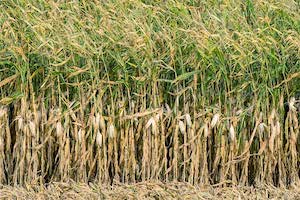Growth problems in corn early in the season are not uncommon. Experts from Kansas State University’s Department of Agronomy are now sharing insight into why producers may be facing these issues as they look ahead to the summer months.
Freeze damage is perhaps one of the most prominent problems that corn producers come across during the spring months. KSU experts note that luckily, most of the corn that has emerged at the time of a freeze will recover with minimal damage. Warmer temperatures also help increase growth rates, and new leaves eventually split away dead tissue so that the corn can grow normally.
Compacted soil and/or waterlogging can also be issues for corn producers. Wet soil can inhibit root growth, slowing overall plant development. A shallow compaction layer can also slow down early root growth, resulting in stunted, nutrient deficient plants.
Early-season lodging, or “floppy corn syndrome,” is not uncommon early in the growing season. This occurs when the weather is hot and dry, preventing adequate development and penetration of nodal roots. Luckily, a good soaking rain is usually enough for nodal roots to establish themselves and for the plants to recover, according to the experts.
If producers come across pests, such as wireworms or flea beetles, an insecticide may need to be used. However, these are all problems that corn growers can tackle to preserve their yield.
More information on early-season growth problems can be found on the KSU Department of Agronomy website.
